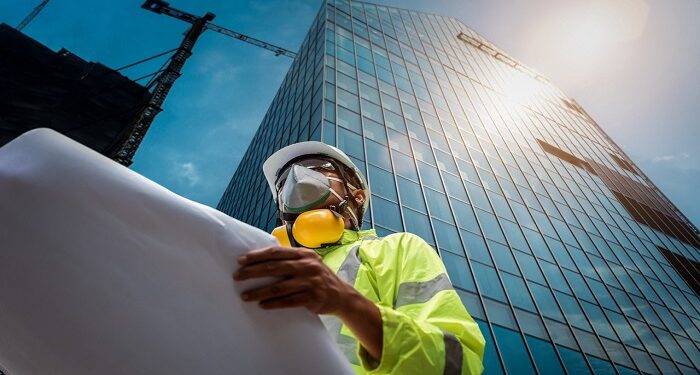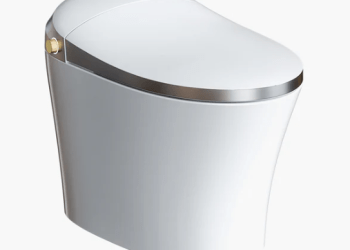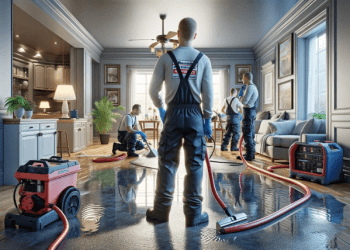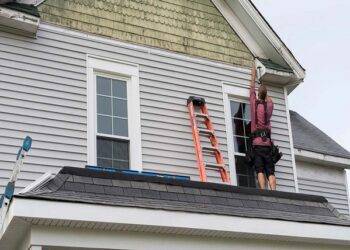Construction projects of country houses do not necessarily have an engineering section, and although this is not an obstacle to starting construction, the project of engineering systems for your house must be immediately put into development.
In the intricate process of construction, the engineering project serves as a crucial stage that ensures the structural integrity and functionality of the final build. This phase involves meticulous planning and collaboration among various professionals to address potential challenges and optimize resources. For instance, when considering the roofing aspect of a construction project, engaging experienced professionals is essential. Roofers Columbia SC exemplify the importance of skilled craftsmanship and local expertise in delivering durable and aesthetically pleasing roofing solutions. Their knowledge of regional climate conditions and building codes ensures that the roofing component not only complements the architectural design but also withstands environmental stresses, thereby enhancing the overall quality and longevity of the construction project.
Electricity supply, heating, ventilation, water supply and sewerage belong to the life support systems of a country house, they are designed in a mandatory manner. At the same time, each of them can be made both in the minimum configuration and in the extended one. The engineering section may include other systems that provide a high level of comfort in the house. In general, the house can be installed:
- heat generation system (boiler with burner and automation system, boiler for hot water supply (DHW) and relevant elements of boiler equipment wiring);
- radiators with pipe wiring and warm floors;
- chimneys (boilers, fireplaces);
- supply and exhaust ventilation (including air humidity support system);
- water supply, water purification system;
- sewerage;
- electrical networks, telephone, TV, Internet, intercom, grounding circuit; lightning protection of the building;
- emergency (autonomous) power sources;
- climate system;
- anti-icing systems of roofs, open balconies, terraces, porches, etc.;
- heating and water supply protection system against freezing;
- security systems (fire, security alarm, video surveillance);
- built-in vacuum cleaner, home theater, pool engineering equipment, home lighting, etc.
Some systems from the above list can be completely abandoned, but if their installation is planned in the house (even a few years after its construction), then they must be taken into account in the engineering project. By them, adjustments are made to the general construction part.
The first task is to find a specialist
If the creation of basic life support systems can be successfully performed by the construction company to which you entrust the construction of the house, then it is better to order the design of complex engineering systems from specialized engineering firms. There you will be offered various technical solutions, their advantages and disadvantages will be shown, and they will help you choose the optimal installation and avoid possible pitfalls, which are often “steamed” by amateurs. For example, only a specialized ventilation company will be able to develop and fit into the house a fairly compact system of ventilation ducts, coordinated in terms of power and consumption with the ventilation unit, after installation of which noise will not appear in the premises due to errors made in the aerodynamic calculation or as a result of an illiterate way of attaching air ducts to overlap.
However, in practice, it is more profitable for the customer to work with one fairly large and experienced engineering company (let’s call it the kitchen remodeling contractors for the engineering part), which will fully develop the engineering section of the project and install the equipment. Or he will take over a significant part of these operations, and distribute the remaining part of the work at his discretion among verified subcontracting organizations, whose work he will monitor and evaluate independently. But in any case – and this is the most important condition – the engineering firm must be responsible to the customer both for its volume of work and for the results of the work of subcontractors. To ensure this condition, the customer and the engineering company must sign a single contract for the full cycle of works and services for the engineering support of the country house – from the design of the systems to their commissioning. The contract should clearly define the subject, terms, cost, payment scheme for the services of the engineering firm, the responsibilities of the parties, as well as penalties for non-performance of works and their delay.
After agreeing on the terms of the works, the customer has only to finance the equipment of the building with engineering systems. The beauty of such cooperation lies in the fact that, after putting the equipment into operation, the engineering firm will be able to become a kind of utility company that keeps the engineering systems of your cottage in working order.
Sequence of works
Work on the installation of most engineering systems begins at the stage of finishing the house, when the box is already built, the house is brought under the roof. There are no unbreakable dogmas regarding the sequence of works, but in general it can be as follows.
Before starting the installation of the equipment, builders must perform all necessary preparatory operations. Installation of boiler room equipment, for example, is better to start after partial finishing of the boiler room is finished. Namely, the podium for the installation of the boiler was made, the introduction of the gas pipe was made, and the gas meter was installed. In addition, electrical wiring for powering the automation system and other electrical equipment of the boiler room, cold water, and sewage drains must be made. The walls and floor must be tiled (the walls can be plastered). Well, the ceiling can be finished after installation and connection of the equipment.
After securing the main equipment, they begin to tie up the boiler room. The pipelines are installed after fixing the boiler and expansion tank. Next, install pumps, air diverters and mud traps. Safety and drain taps are attached to the boiler and boiler. The pipelines are fixed on the suspension holders so that the weight of the pipes, especially the gas pipe, is not transferred to the boiler. Then manometers, thermometers, thermostats and temperature sensors are installed.
They will not start working without complying with their requirements for builders and installers of the heating system. Radiators will be installed only after windows have been installed in the premises, the places under the radiators have been plastered and painted (since the finishing of these surfaces will be difficult later), channels for laying risers and holes in the ceilings have been prepared. (The only exception is models that are connected to pipelines through taps, closing which allows you to remove radiators without draining water from the system and turning off the heating.) Next comes the laying of pipes, installation of heating risers, installation of floor collectors (if the collector scheme is selected pipe wiring).
Usually, electrical installation work in a country house is carried out simultaneously with other construction and finishing operations. In wooden houses, cables from the switchboard to consumers in different rooms are laid in special polymer or metal sleeves in the wall structures. Some modern house construction technologies suggest laying cables in the walls during their erection, so the first visit of electricians to the object can take place long before the house is brought under the roof. Well, in houses made of brick and concrete, electricity starts working when the house is already brought under the roof, but even before the start of finishing. First of all, they are in a hurry to finish the dirtiest work – drilling walls, creating wells for installing socket outlets. The laying of cables should take place before the plastering of the walls, and the installation of switch mechanisms, sockets, etc. – necessarily after plastering. After the final finishing, instead of temporary lamps, chandeliers and other lighting devices are hung and connected.
Installation of internal water supply and sewerage, as a rule, begins after the electrical installation works, guided by the layout of sanitary appliances agreed with the customer (mixers, washing machines and dishwashers, jacuzzi, shower cabin, etc.). At the same time, external water supply and sewage can already be introduced into the house, but their connection to internal networks is often carried out only before handing over the house to the customer.
First of all, risers are installed, then they usually start laying horizontal sections of water and sewer pipes, their outlets and branches. It is mandatory to provide ventilation of the sewer riser with its release to the outside through the roof, the laying of pipes, if possible, is carried out with their shelter in niches and niches.
The most time-consuming installation of water pipes is made of metal galvanized pipes, but they are now used less and less. During the installation of water supply from polymer and metal-polymer pipelines, and sewage – from PVC pipes, such operations as flexible, thread cutting, waiting for joints can be avoided, which significantly simplifies and speeds up installation. Connection of plumbing devices is carried out after finishing.
For example, the installation of ducts for mechanical supply ventilation in brick cottages begins with marking the routes for laying ventilation channels, installing brackets and suspensions. Next, the direct process of assembly and installation in place of nodes and shaped parts of air ducts with the installation of fastening elements, sealing of joints connecting individual elements of the ventilation network begins.












